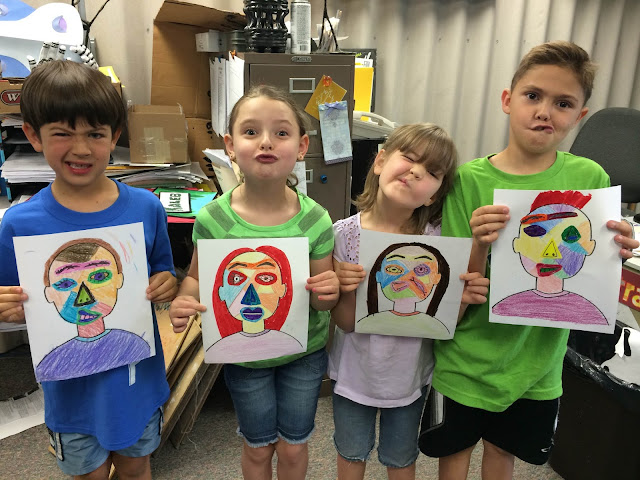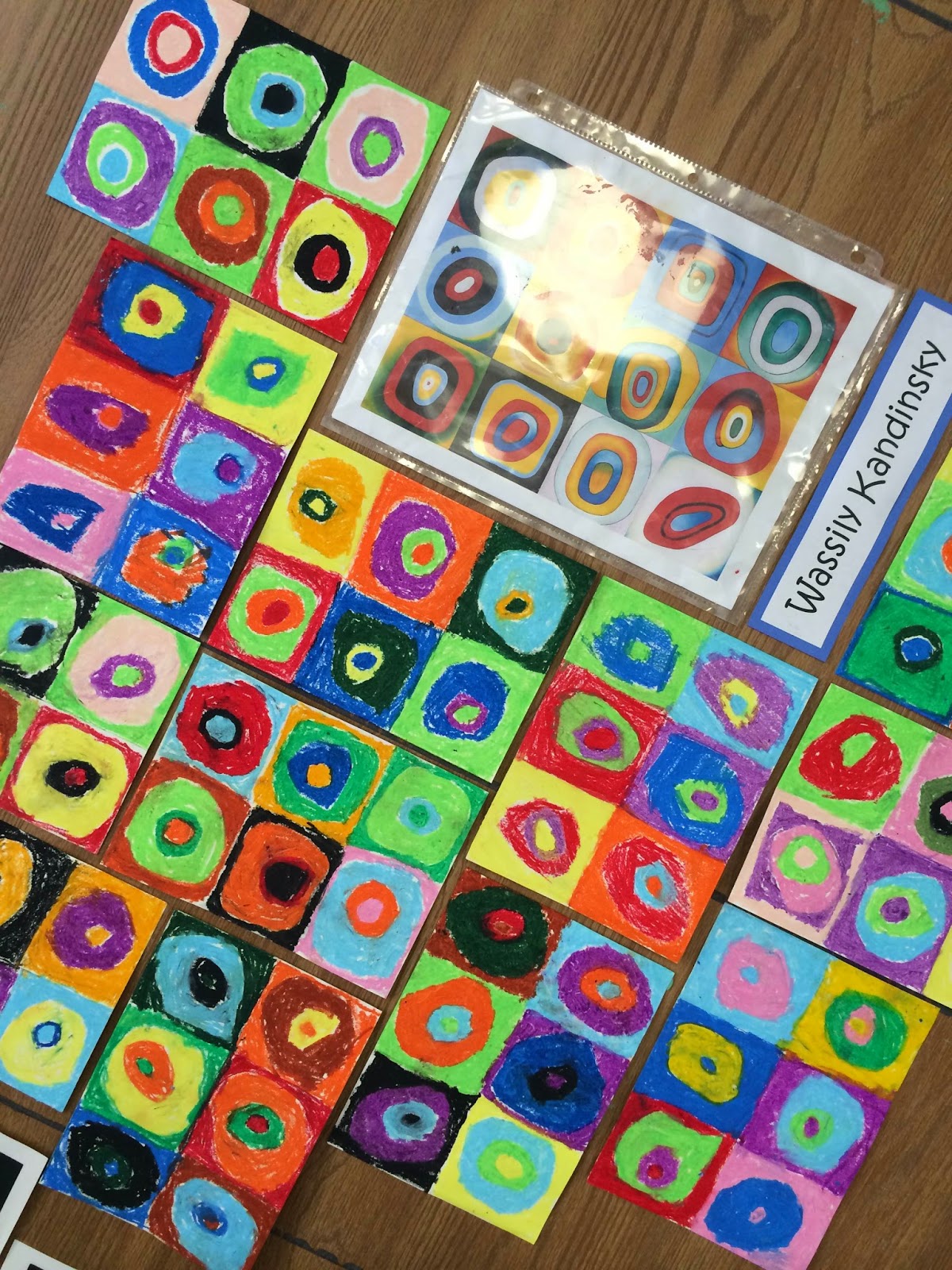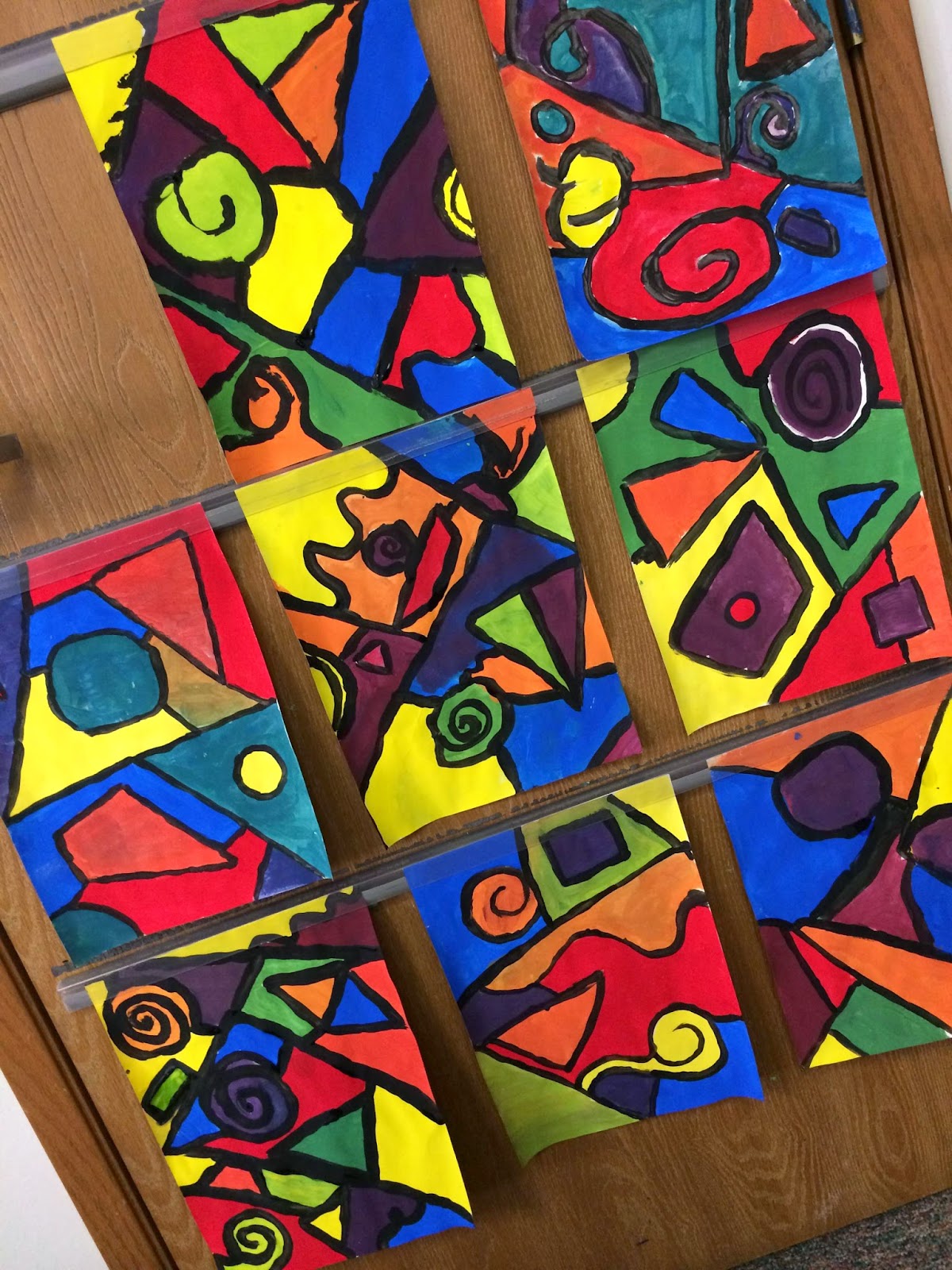When learning about the Element of Art, Shape, the elementary classes have focused on two categories of shape: organic and geometric. We learned that organic shapes are the kinds of shapes found in nature like clouds, leaves, and rocks. They are shapes that don't really have a name, and whose areas cannot be measured perfectly using math. Geometric shapes can be identified with names (ie: square, triangle, oval) and their areas can be accurately measured with mathematical equations.
To help convey this idea, we created wild "creatures" using various types of shapes!
We read the book
Where the Wild Things Are, and then with the use of our big imaginations, got to work.
Our kindergarten and 1st graders had to reeeeaaach under the table where a wild forest had "grown" (just like in Max's bedroom in the book!) and capture a wild creature. The thing was, only they could see it! So, they had to create a portrait of their creature for everyone to see. They chose a main shape for the body, and then added features with small geometric shapes.
After naming their creature, their portrait was complete!
Are you dying of cuteness overload here, because I sure am! Words cannot express how happy I was to have these little guys staring back at me for a few weeks :)
Our grades 2-3 also created "Wild Creatures" but focused on organic shapes instead of geometric. With watered down paint, they selected colors and then blew the paint around on their papers with a straw. We pretended that they stepped on these invisible creatures on the way in, and that's why they are "splatted" on the paper!


Hyrum C's puzzled Cyclops and Lucy M's surprised 4-eyed creature.
In our 4th and 5th grade classes we continued to used paint to create organic shape creatures, but with a technique that created symmetry on both sides of the paper. Students scooped paint into the center of the paper and then folded it in half. The cool thing about this was that you never knew exactly how it would turn out! A few eyes and mouths later, more creatures were born!
Daniel's buck-toothed friend
Waylon's cool-colored creation
It goes without saying that we had a WILD time learning about shapes in art!
































_cover.jpg)

















